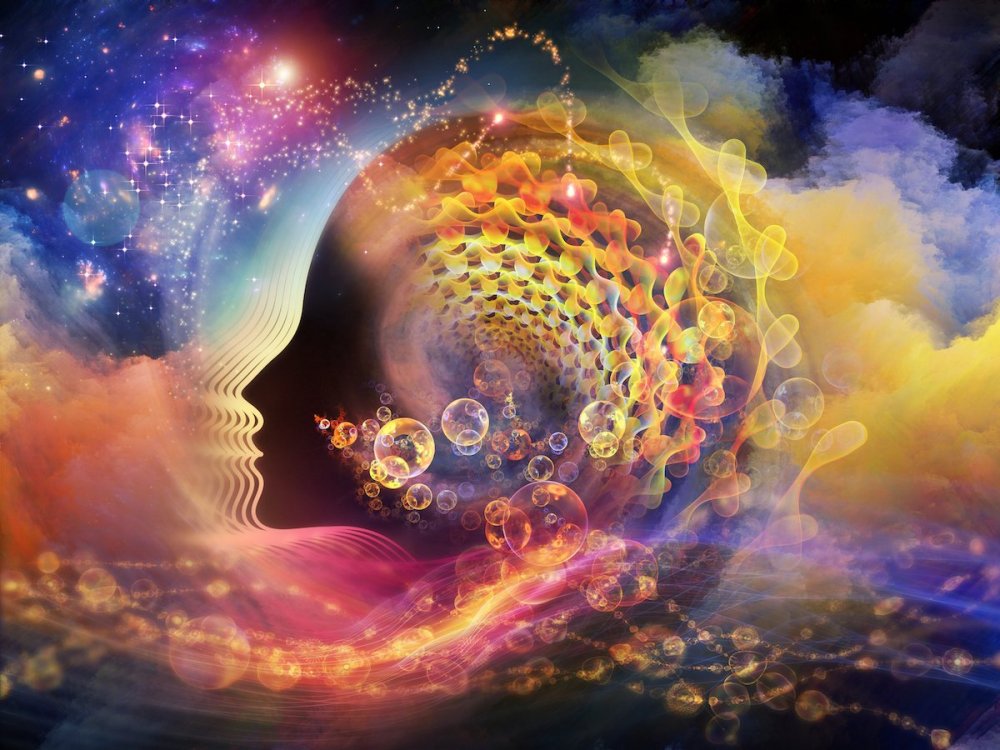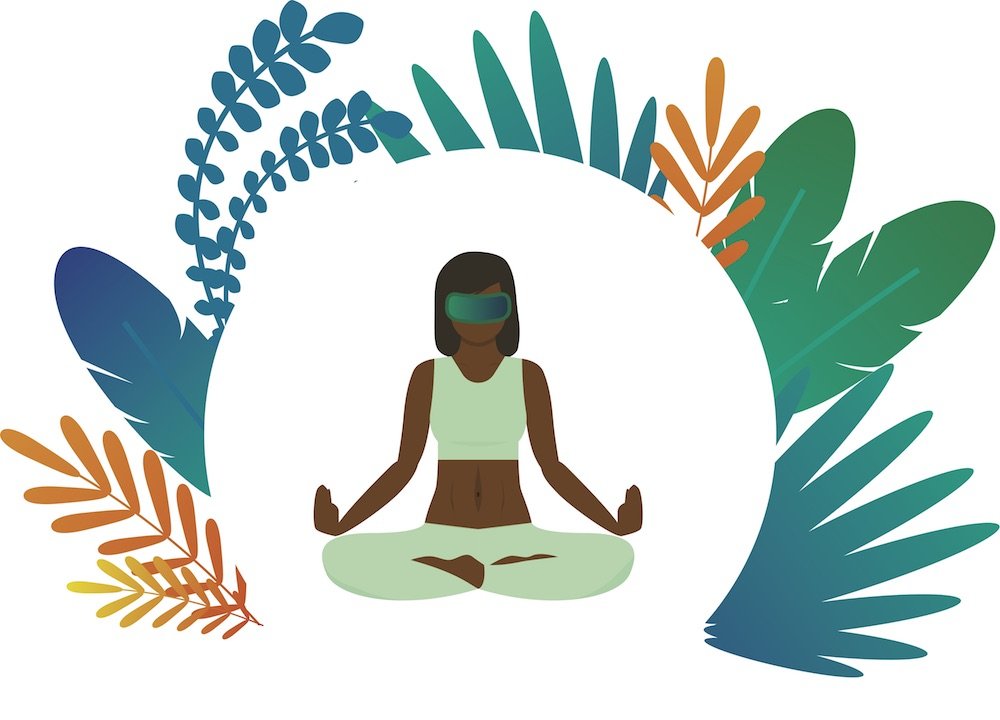Incorporate the power of visualization into your meditation practice. Ann Vrlak explains the benefits of using your imagination while meditating and guides you in two practices.
Visualization meditation is an enjoyable and powerful way to harness your imagination in meditation. This form of meditation is different from visualization itself. Here’s how.
You may have heard that elite athletes like the swimmer Michael Phelps or basketball legend Michael Jordon have used visualization. They both learned to visualize themselves achieving a particular goal: finishing the freestyle in World Record time or sinking a winning three-pointer just before the buzzer.
RELATED: 8 Manifestation Techniques
But why? Well, these sports stars were able to capitalize on an interesting fact about the brain. It can’t always distinguish between something you imagine you're doing and something you’re actually doing. The same neurons fire in your brain in either case, so visualizing the activity in your mind makes it much easier to do in reality – because your brain has already practised it!
Amazing, eh? That’s visualization, and you can see why it’s a common tool for people who want to excel in their field.
So, what is visualization meditation?
Visualization meditation is different. It uses this considerable power of visualization in service of a traditional meditative goal such as developing concentration or compassion, or connecting with a peaceful, space inside yourself.

Using visualization during meditation can enhance your practice
For example, I use visualization meditation a lot with children because their imagination is so accessible to them. It gives them a fun way to visualize and understand abstract concepts, like freedom or focus or peacefulness.
And, for many adults, visualization meditation changes a black and white experience to one in vivid, 3D colour.
This practice helps to evoke the emotional and sensory aspects of your experience. It’s markedly different, for example, to think about the concept of loving-kindness in the abstract than to feel loving-kindness for your partner or your beloved pet, isn’t it? The visualization helps you to connect with the experience beyond the concept. That’s the key.
“For many adults, visualization meditation changes a black and white experience to one in vivid, 3D colour.”
This form of meditation is a helpful bridge to the many people who find the mental focus of meditation difficult. For them, the instruction to focus on their breath or a mantra or on silence itself is too abstract – they don’t grasp what they need to do.
However, visualization meditation allows you to use skills you’re familiar with to learn something unfamiliar.
Benefits of visualization meditation
The benefits of visualization meditation, especially if you practice with some regularity, are the same as other meditation practices:
- Increased focus
- Reduction in anxiety and stress, and even depression
- Resting and rejuvenating your nervous system
- Increasing energy and boosting the immune system
- Better sleep
- More self-compassion and empathy for others
Visualization meditations you can try
Here are two visualization meditations that use traditional meditation concepts: observing thoughts and emotions in a non-judgmental way, and deepening compassion for yourself and others.
1) Non-judgmental observation
This relaxing meditation helps you visualize the concept of non-judgmental observation as a peaceful river. It goes like this.
-
Close your eyes and imagine yourself lying comfortably on the banks of a slow-moving river. Create a scene that you find beautiful and safe, somewhere you can imagine yourself feeling totally at home and relaxed.
-
Fill in the scene with as much sensory information as you can. What colours do you see around you, in the trees, in the sky, in the river itself? Do you hear birds or wind in the trees? How does the earth feel beneath you, and what do you feel on your skin?
-
Now, imagine yourself sitting up and watching the river. You begin to see leaves, twigs and other objects floating by. You watch them come slowly out of the distance into view, and then disappear as they float away down the river. Try not to become attached to any particular object. Just notice them and let them continue on their way down the river.
-
And imagine that your thoughts and emotions are on this river, too. They come from the distance, flow into your mind, stay for a moment and then slowly drift out of view.
-
Play around with this image for a while. Watch how parts of your experience come and go, including any questions you have about the visualization or how you’re doing it right or wrong. These thoughts too appear and then move on, when you let them be.
-
Notice that you’re on the shore watching all these things come and go, essentially unaffected by them.
Continue doing this practice for as long as it feels enjoyable. When you’re done, reflect on this visualization meditation and your direct, sensory experience of having objectivity on your thoughts and feelings. How did it feel? Do you think this meditation could help you when you are anxious, angry or depressed?

Imagining nature and colour during meditation shutterstock/RangArt
2) Loving-kindness
Another practice you can try is a loving-kindness meditation to grow your compassion for yourself and others.
-
Again, find a comfortable position lying down or sitting up, and close your eyes.
-
Think about a challenge or difficulty you’re having right now, something that is upsetting you or causing a conflict with someone. Just for a moment, feel the upset or conflict. Breathe slowly and deeply.
-
As you feel the situation, say these words yourself silently or out loud, as sincerely as you can:
May I be happy.
May I feel safe from harm.
May I accept myself just as I am.
May I be peaceful and at ease.
-
Do your best to really feel the words: what it feels like to be happy, or safe, or self-accepting. Use your senses again to make this experience come to life, with what you see and hear and taste and smell. Genuinely wish these things for yourself and feel them.
-
When you’re ready, begin to extend this loving-kindness to a person or people you care about.
May my daughter Sarah be happy.
May my brother Steve feel safe from harm.
Or:
May everyone in my family be happy.
May everyone in my family be peaceful and at ease.
-
See these people in vivid 3D, experiencing these aspects of loving-kindness that you wish so deeply for them. Let these experiences fill your being.
- And if these particular phrases don’t feel quite right for you, feel free to change them until they do. But, try them first, even if they feel a bit awkward. Most people pre-judge loving-kindness meditation before they even try it!
Finally, if you’re one of the many people who finds it easier to care for others than themselves, you can start this meditation thinking about others, and then finish with directing loving-kindness toward yourself. You may find this easier.
The wrap: visualization meditation
If you’re someone who has found meditation a difficult or dry, unhelpful mental exercise, visualization meditation may be just what you need. We are multi-dimensional creatures, after all, and our emotions and deeper perceptions are what many of us find bring meaning to who we are and what we do.
RELATED: Turning Pain into Compassion: Tonglen Meditation
I hope you’ll try these practices or try incorporating visualization into different types of meditation practices. Use the sensory tools I’ve described here to create that multi-dimensional experience for yourself, rather than letting your attention do the heavy lifting in meditation. Enjoy the power of your imagination to deepen your understanding of yourself. •
Main image: shutterstock/agsan drew
happiness.com | The fine art of being: learn, practise, share
Are you a happiness.com member? Sign up for free to:
■ read our happiness magazine with practical life tips
■ share and support others in our happiness forum
Tummo Breathing | Spirituality | Resilience | Internal conflict
Written by Ann Vrlak
 Ann Vrlak is Founder of OneSelf Meditation and a meditation practitioner for over 25 years. She’s a Certified Meditation Teacher for adults and for children (the best job ever!). She loves to share how the perspective and practice of meditation can support people with their everyday stresses and on their journey of self-discovery.
Ann Vrlak is Founder of OneSelf Meditation and a meditation practitioner for over 25 years. She’s a Certified Meditation Teacher for adults and for children (the best job ever!). She loves to share how the perspective and practice of meditation can support people with their everyday stresses and on their journey of self-discovery.




Join the conversation
You are posting as a guest. If you have an account, sign in now to post with your account.